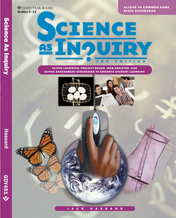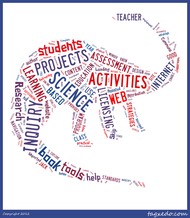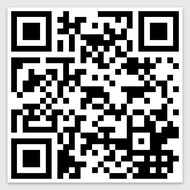A Web Paper on Two Visions of Science Education: Vision I (Traditional); Vision II (Progressive)
I have been reading and have referenced on this weblog the October 2009 special issue of the Journal of Research in Science Teaching (JRST) on the topic/theme “Scientific Literacy and Contexts in PISA Science.” The articles in the special issue provide a broad view of international testing as conceived in PISA, as well as the TIMSS.
One of the articles by Sadler and Zeidler, which was focused on PISA and Socioscientific Discourse, used the term progressive science education as a way to describe a vision of science education that includes public understanding of science, humanistic science education, context-based science teaching, S-T-S, and socio-scientific issues. As pointed out by the authors, the term progressive science education was used by George DeBoer in 1991.
A bit of background. In a paper written by Douglas A. Roberts (Scientific Literacy/Science Literacy) that appeared in the 2007 Handbook of Research on Science Education, the author introduced two visions to explore the notions of scientific and science literacy, namely Vision I and Vision II. In Roberts view, Vision I gives meaning to scientific literacy by “looking inward at the canon of orthodox natural science, that is, the products and processes of science itself.” As Roberts states, this approach envisions literacy (or, perhaps, thorough knowledgeability) within science. He goes on to point out that the Benchmarks for Science Literacy by the AAAS approximates his view of Vision I. I would add that the National Science Education Standards (NCES) imparts Vision I as well.
To Roberts, there is a contrasting and quite different vision of science, Vision II, which gets its meaning from “the character of situations with a scientific component, situations that students are likely to encounter as citizens.” Roberts defines this vision as literacy (again, read thorough knowledgeability) about science-related situations. In my view, a very good description and discussion of Vision II is by Glen Aikenhead in his book, Science for Everyday Life.
We might think of Vision I as traditional science education; Vision II as progressive science education.
In the JRST special issue on PISA Science, some of the authors suggest that most of the documents produced in the past 20 years under the “standards movement era” tend to support Vision I. Indeed, we could also suggest that most state-standards are written as Vision I science literacy. At the US national level, the NAEP assessments focus on Vision I. At the international assessment level, we might identify TIMSS as a Vision I marker.
There is some suggestion in the JRST issue that PISA 2006 aligns very closely with the Vision II view of science literacy described by Roberts. This view was suggested by the editors of this special issue, but Sadler and Zeidler wrote that they have serious concerns about the extent to which PISA supports progressive science education. Can progressive science education, or Vision II science literacy be “measured” by the use of a standardized assessment such as PISA?
The answer to this question is probably not. As much as the authors of PISA would like us to believe that the test measures contextualized and controversial topics, others argue that the items are really decontextualized. I found the items on PISA to be quite complicated, and required a lot of reading, and in some cases, what the students were asked to read had little or nothing to do with the questions that were asked. One thoughtful evaluation of the PISA assessment program was written by Svein Sjoberg (see PISA and “Real Life Challenges: Mission Impossible). He suggests that, although PISA claims to test “real-life skills and competencies in authentic contexts,” such a goal is impossible in a traditional testing environment as described in the PISA documentation.
Progressive science education (humanistic science education) will require a different form of assessment, and one that will rely on the observations, and active assessment of learning in the context of classrooms by science teachers and researchers. The most effective form of classroom assessments that contribute to our understanding of student learning, and indeed help students improve in their learning are formative assessments, not summative assessments in the form of PISA, or TIMSS.
Yet, in the USA, where science education has actually made a great deal of progress (see Lowell & Salzman), the winds of change are aimed at further standardizing teaching by the “common standards movement.” This will be followed by the development of “common tests” which will be used to compare and contrast schools, school districts, states, and individuals, including teachers and principals.



